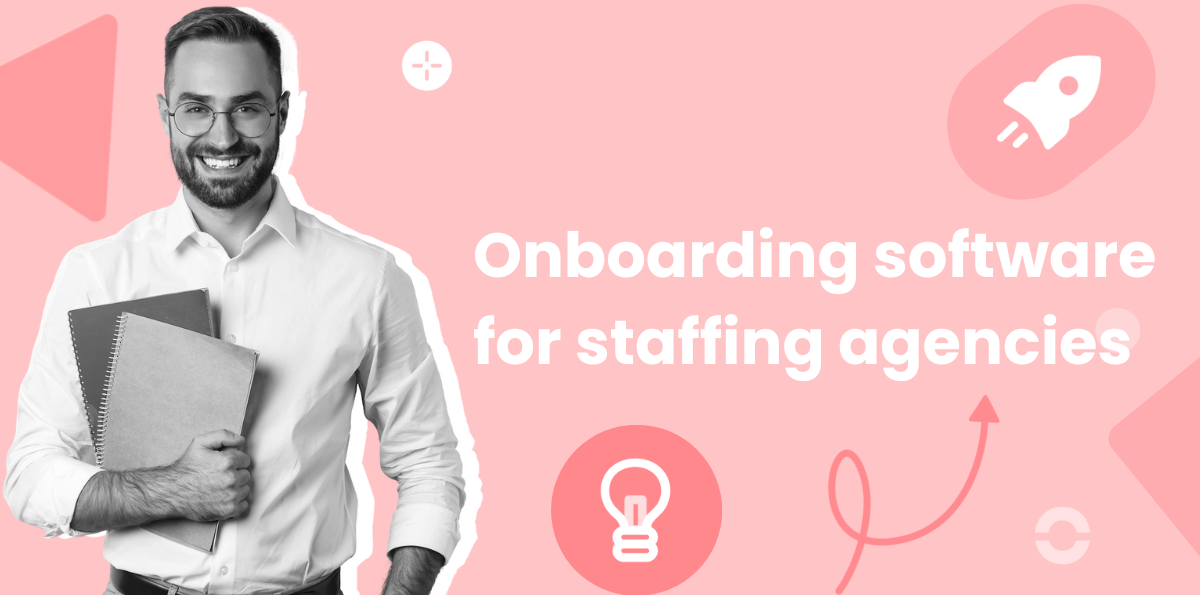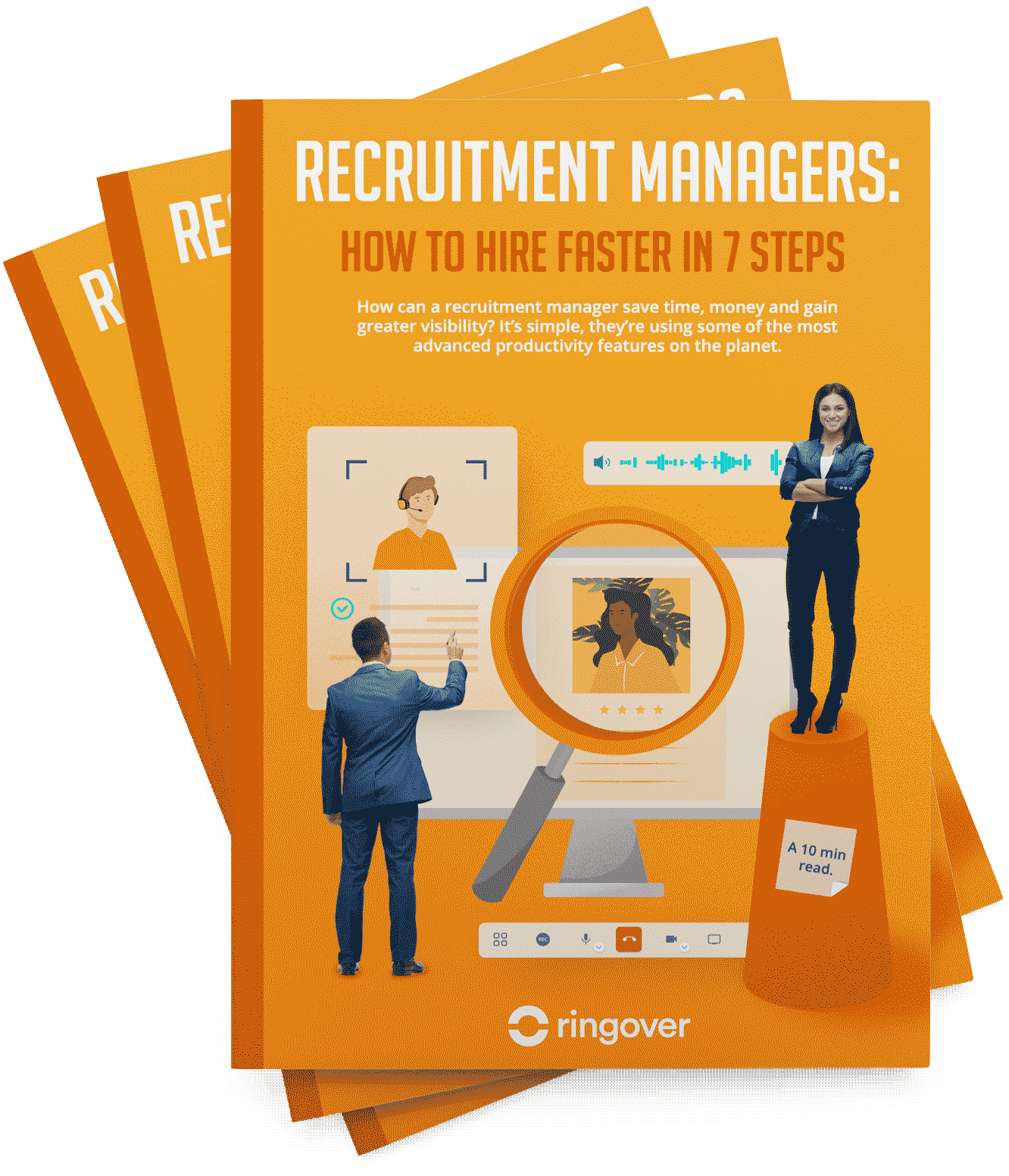Summary
- Table: Best 20 onboarding software for staffing agencies
- List: Top 20 Onboarding software for staffing agencies
- Why Use Onboarding Software?
- Most Important Features of Onboarding Software for Staffing Agencies
- Onboarding Challenges
- Measuring Onboarding Success
- Onboarding Software for Staffing Agencies FAQ
Onboarding at staffing agencies comes with unique challenges. New staff may interact with multiple clients and manage a variety of different contractors. They need to understand each client's specific needs and preferences in order to match them with the right talent. Additionally, staffing agencies tend to experience higher turnover, making onboarding a frequent task.
Implementing onboarding software can streamline and improve the new hire experience for staffing agencies. Onboarding technology reduces manual processes, delivers a consistent experience, and enables new hires to get up to speed faster. As a result, properly onboarded employees become productive sooner. They better understand agency operations and culture right from the start. Onboarding software also facilitates information sharing and collaboration across distributed teams.
This article will explore the top onboarding software options for staffing agencies, as well as key features and the most common challenges encountered while onboarding new staffing agents.
Table: Best 20 onboarding software for staffing agencies
| Software Name | Features | Advantages |
|---|---|---|
| 1. BambooHR | Task assignment, document collection | Good UX, centralized data |
| 2. WorkBright | Document management, compliance | Possible to follow tax forms |
| 3. SAP SuccessFactors | Compliance tools, analytics | Good for enterprise-sized organizations |
| 4. Workday | Tools for managing payroll and benefits | Accessible via the Internet |
| 5. SilkRoad | Visualization tools for onboarding roadmap | Easily handle surge hiring |
| 6. Seismic Learning | Content creation and assessments | Improve skill levels quickly so employees are more effective, more quickly |
| 7. ClearCompany | ATS and onboarding included in the software | Comprehensive software handles all aspects of hiring and onboarding |
| 8. Zenefits | Benefits administration, tax compliance | Relatively affordable and built for small and medium businesses |
| 9. KiSSFLOW | Nocode interface to create automated workflows | Doesn't require technical knowledge |
| 10. FactoHR | Automate payroll calculations | Big impact and easy to set up |
| 11. Oracle Taleo | Automate tasks related to candidate search and hiring | Easily scale while saving time |
| 12. UKGPro | Handle payroll, benefits, time management, etc. from one interface | Simplify operations |
| 13. iCIMS | Ease onboarding paperwork in addition to candidate experience management tools | You can take advantage of applicant tracking tasks and simplify onboarding |
| 14. Zoho Recruit | Create a job site, parse resumes…few features for onboarding | Better manage hiring pipeline |
| 15. Greenhouse | Interview management, candidate sourcing features | Ease the hiring process |
| 16. Breezy HR | Automated messaging, e-forms, checklists to better track new employee progress | Significantly improve onboarding management |
| 17. Gusto | Payroll setup, digital forms | Create and track comprehensive onboarding processes |
| 18. Lever | Applicant tracking, task assignment, digital forms | Automate aspects of hiring and onboarding process |
| 19. Personio | Workflows, digital documents, an employee self-service portal | Handle hiring, onboarding, and employee engagement from one platform |
| 20. Kin | Create onboarding checklists and collect documents digitally | Ideal for small and medium businesses |
List: Top 20 Onboarding software for staffing agencies
1. BambooHR

BambooHR is a recruiting tool which offers comprehensive onboarding features like customizable workflows, task assignment, document collection, e-signatures, and more. Also known as an applicant tracking system (ATS), BambooHR helps create and manage an organized candidate pipeline. Famous for its customization possibilities, BambooHR can be integrated with VoIP services like Ringover, which give you access to a business phone system within the BambooHR interface in a matter of minutes.
Try Ringover for staffingBambooHR Advantages 🟩
- Intuitive interface
- Centralized employee data, including benefit information, call logs, and more
BambooHR Disadvantages 🟥
- Costly relative to similar options
2. WorkBright
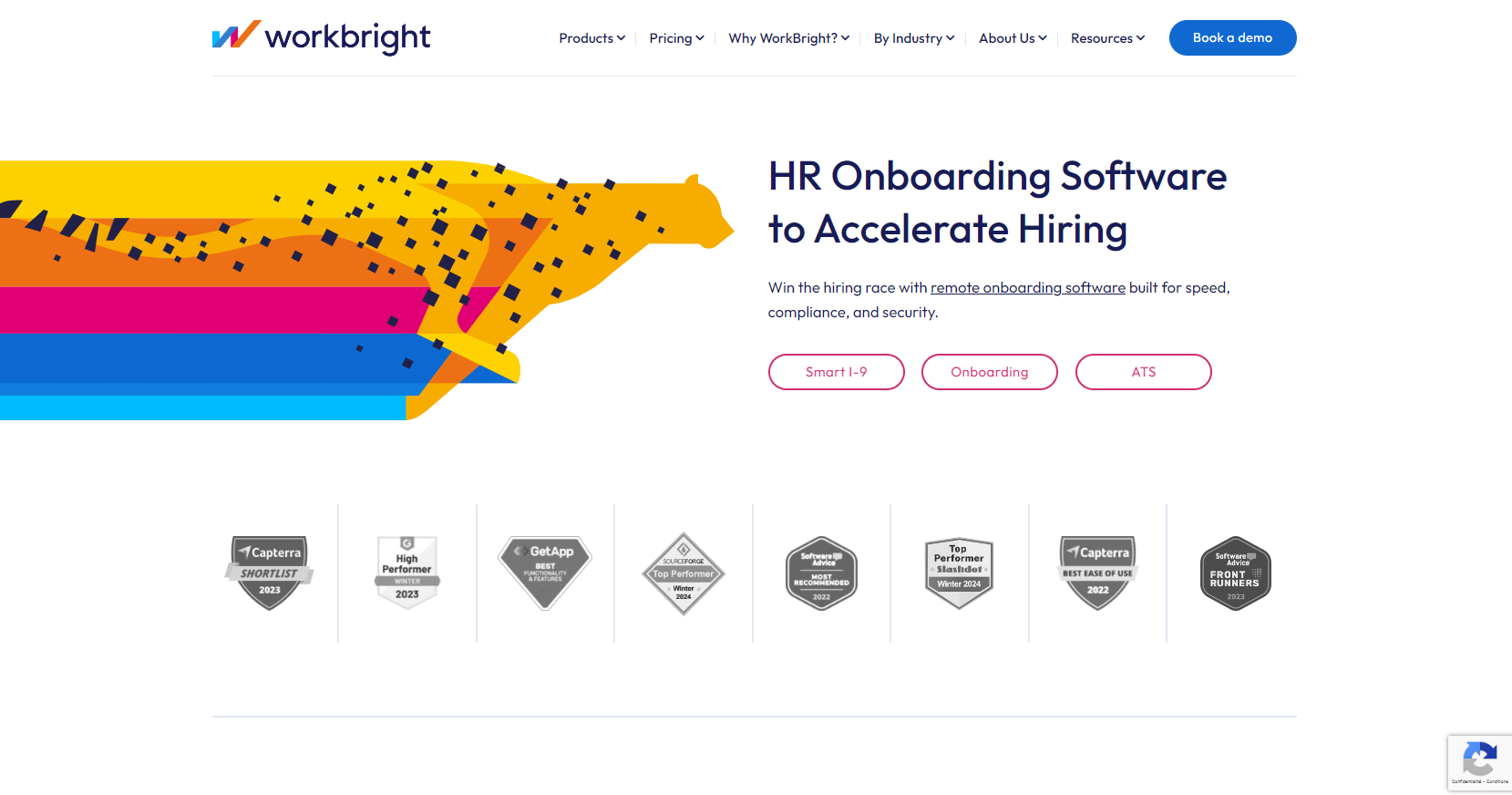
This professional staffing solution is unique in the sense that it's completely specialized in onboarding and offboarding. Some of its most important features manage document management and compliance, but it's also well-known for the customizable workflows it offers.
WorkBright Advantages 🟩
- Can track tax forms
WorkBright Disadvantages 🟥
- Missing features related to post-onboarding HR tasks.
3. SAP SuccessFactors
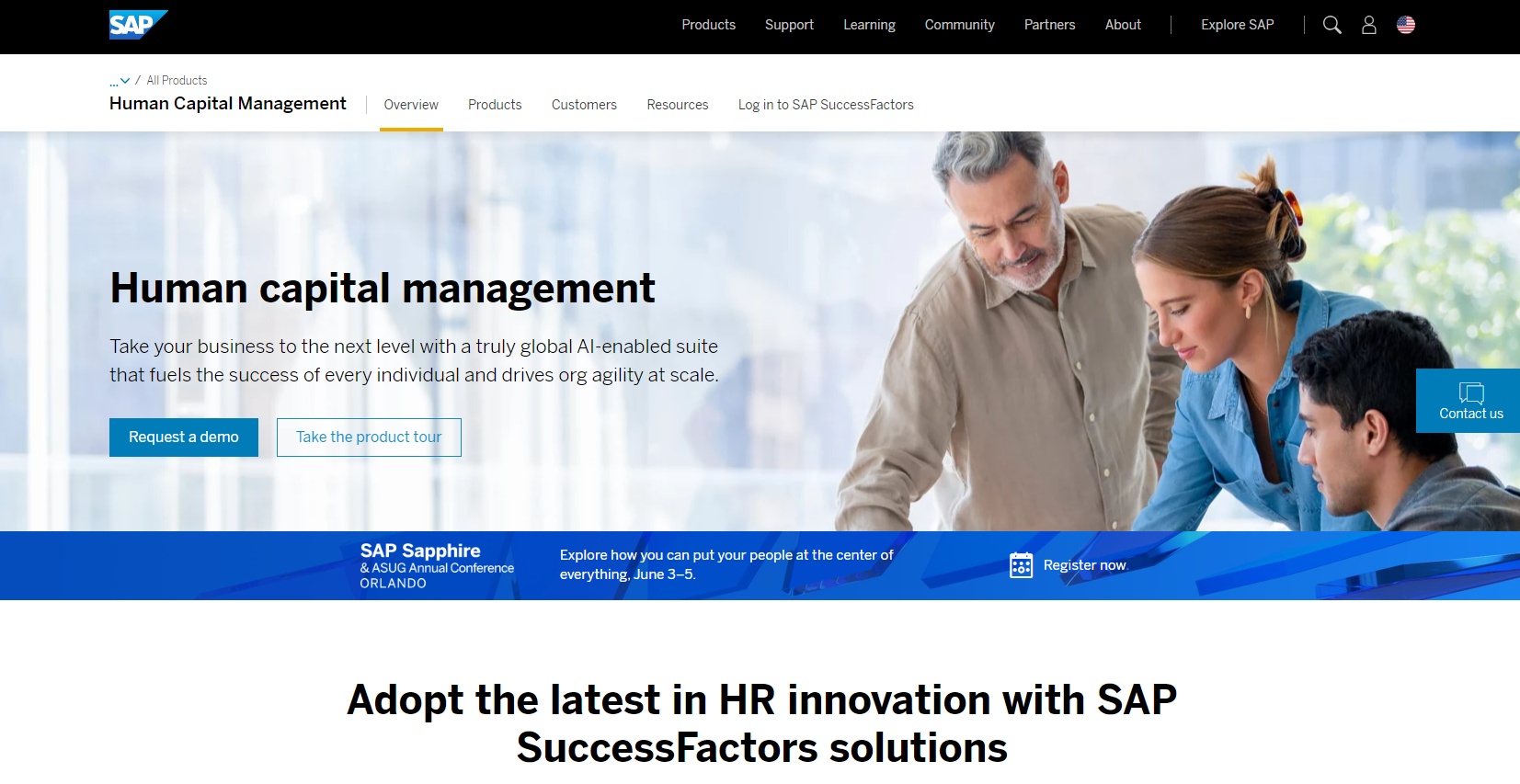
As a human capital management (HCM) suite, SuccessFactors has robust onboarding capabilities with compliance tools, analytics, and more. Intended for enterprise-sized organizations using large-scale tools like enterprise communication systems, SuccessFactors is not a recruiting software for small businesses.
SAP SuccessFactors Advantages 🟩
- Easily integrates with SAP's well-known ERP system
- Large range of features
SAP SuccessFactors Disadvantages 🟥
- Complex interface
- Demanding installation and onboarding
- Costly due to software scale
4. Workday

Another cloud recruitment and staffing software comparable to SuccessFactors, Workday offers full-scale onboarding as part of its HCM platform. It focuses on process configuration over customization, helping with payroll, benefits, workforce planning, and more.
Workday Advantages 🟩
- Unified HR data
- Mobile access
Workday Disadvantages 🟥
- Expensive
- More complex than standalone software
- Difficult to implement
5. SilkRoad

SilkRoad RedCarpet onboarding centralizes all new hire logistics onto one platform, as it's an end-to-end talent management solution.
SilkRoad Advantages 🟩
- Great UX
- Structured onboarding
SilkRoad Disadvantages 🟥
- Integration with other systems can be tricky
- Complex interface
6. Seismic Learning
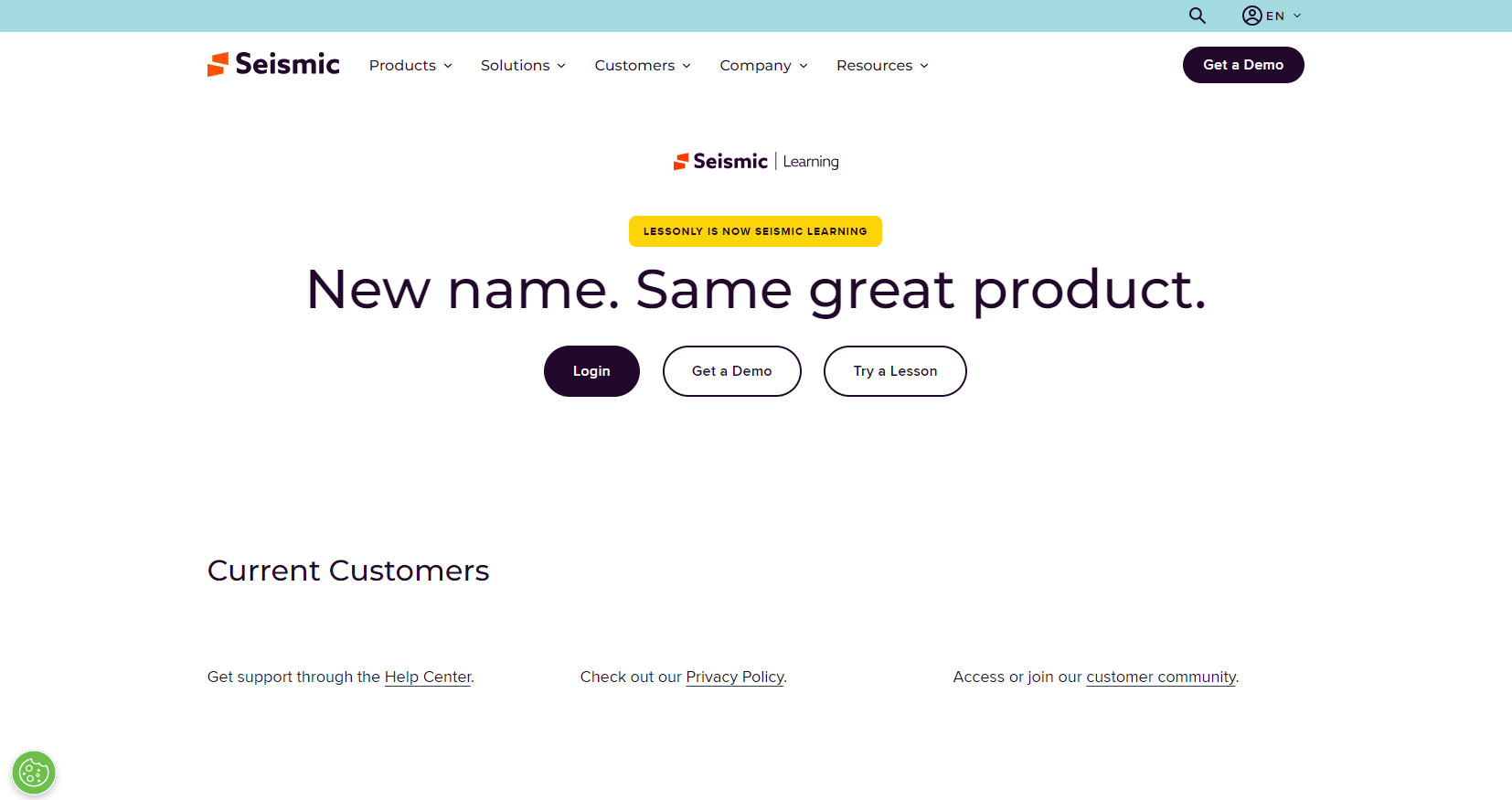
Unlike the other recruiting automation software on this list, Seismic Learning is a learning management system. This type of software aims to get new hires productive faster through microlearning and training. The features revolve around onboard support like content creation and employee assessments.
Seismic Learning Advantages 🟩
- Exceptional new hire experience
Seismic Learning Disadvantages 🟥
- Light reporting
- Lacks a robust selection of integrations, you may feel the lack of a cloud VoIP phone
7. ClearCompany
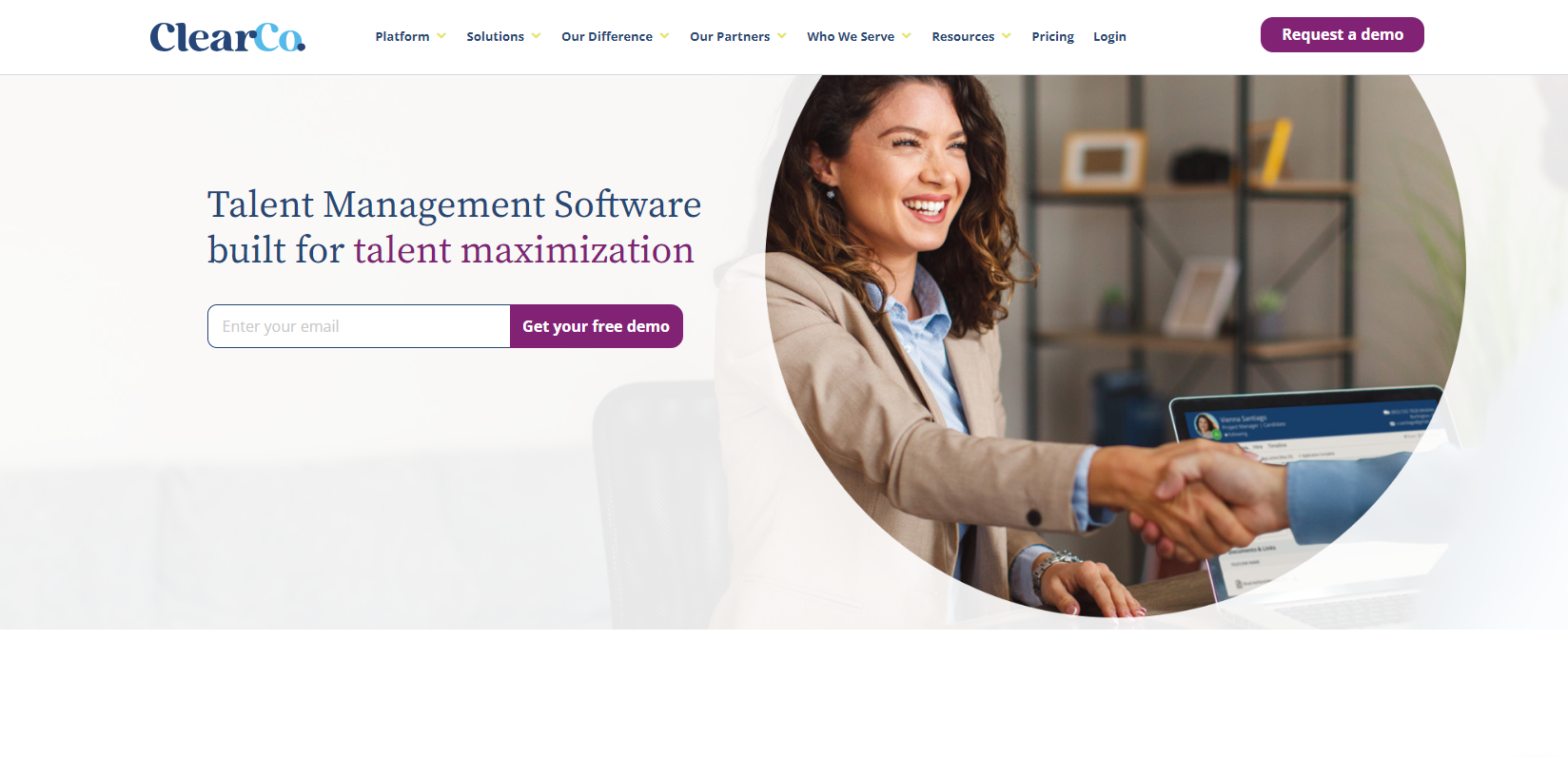
ClearCompany takes an all-in-one approach to onboarding and broader talent management. The point of this solution is to improve employee engagement and the overall candidate experience.
ClearCompany Advantages 🟩
- Unified interface
- Customizable automation
ClearCompany Disadvantages 🟥
- Clunky UX
- Steep learning curve for new users
8. Zenefits
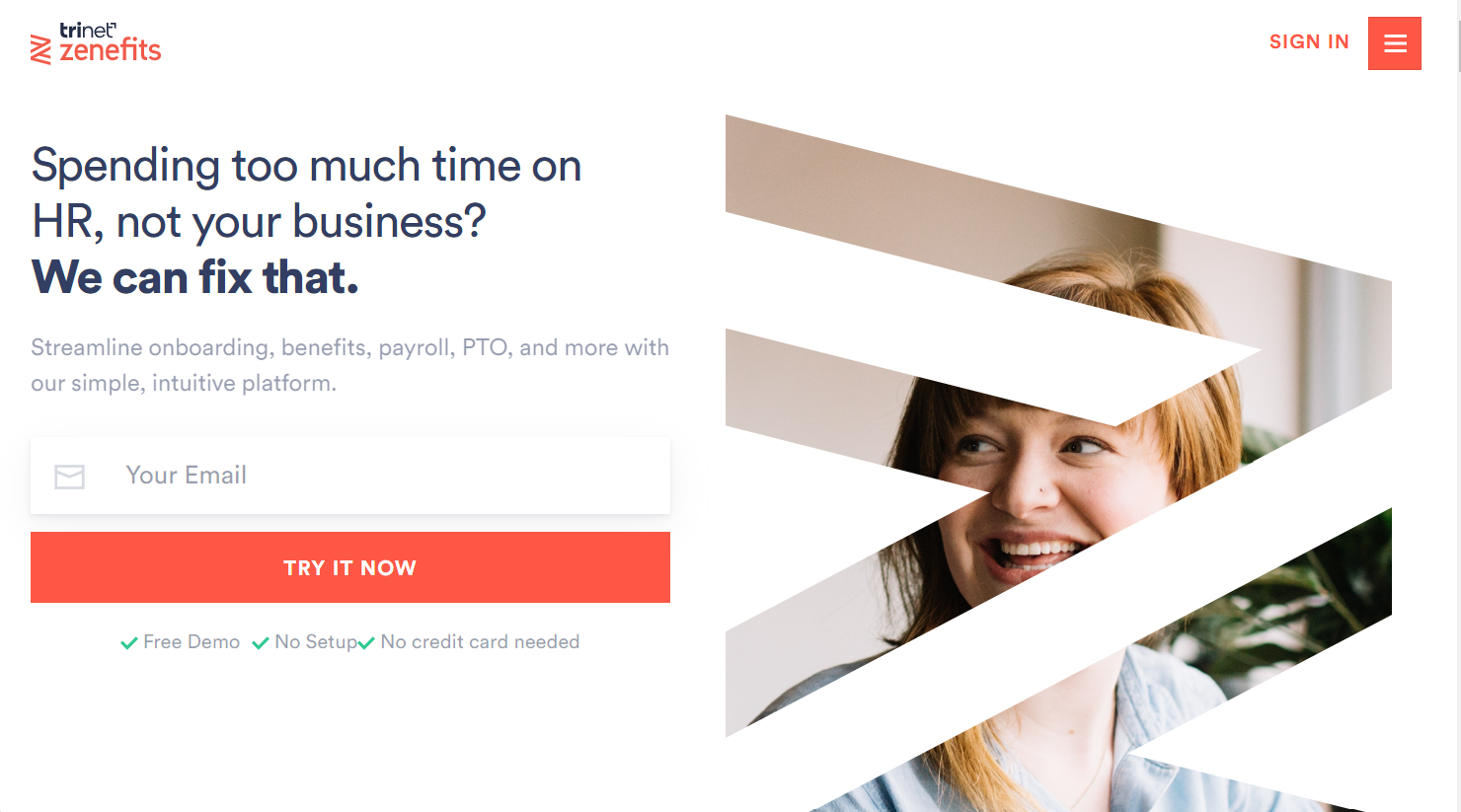
Zenefits focuses on streamlining HR, onboarding, and benefits administration for small and medium businesses. Despite being built for smaller organizations, Zenefits still includes features for people management, benefits administration, compliance, and more.
Zenefits Advantages 🟩
- Affordable price
- Intuitive workflows
Zenefits Disadvantages 🟥
- Compliance concerns with state regulations
- Five-user minimum
9. KiSSFLOW

KiSSFLOW is a more general software which allows users to create workflows via a nocode interface. This software can therefore create smart forms to simplify onboarding.
KiSSFLOW Advantages 🟩
- Easy to build and customize
- Integrates with software like Zapier and Slack
KiSSFLOW Disadvantages 🟥
- Lack of advanced reporting
- Limited scalability
10. FactoHR

As a HR and payroll management software, FactoHR ensures users can easily set up payroll processes and automate necessary calculations.
FactoHR Advantages 🟩
- Easy setup
- Workflows
FactoHR Disadvantages 🟥
- Lack of sophisticated features compared to larger suites
- Some users report issues with support
11. Oracle Taleo
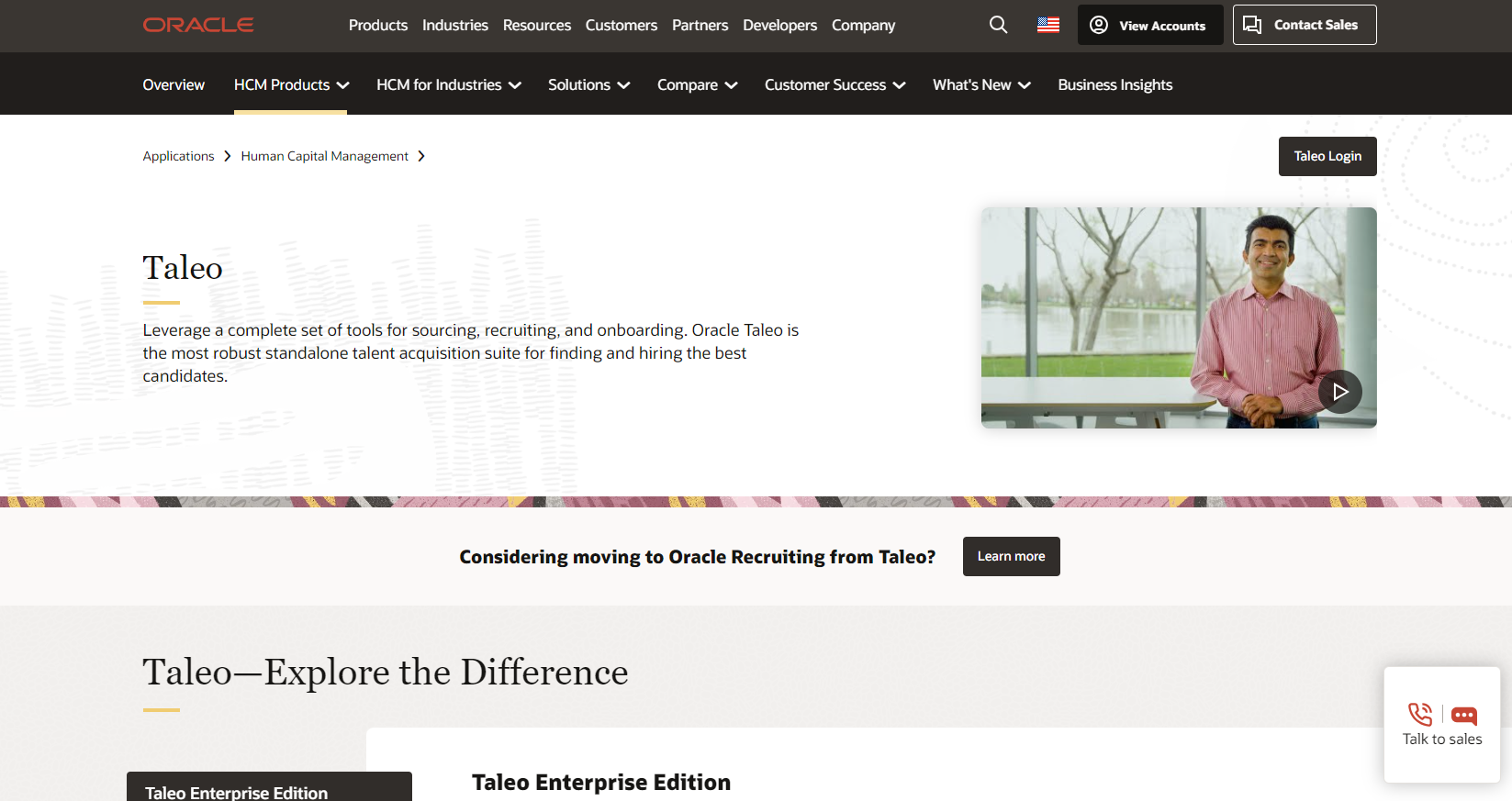
Oracle is a very well-known recruitment management system offering enterprise solutions. The Taleo software is part of Oracle's large HCM platform, and helps users automate key tasks like resume parsing, posting jobs, scheduling interviews, and more.
Oracle Taleo Advantages 🟩
- Scalable
Oracle Taleo Disadvantages 🟥
- Clunky interface
- Extensive configuration needed
12. UKGPro

Formerly known as UltiPro, UKGPro works by integrating HR, payroll, benefits, talent management, and time management features. The idea is that this multitude of features will ultimately simplify operations. However, this approach means it may be lacking in onboarding tools and difficult to use to its full potential.
UKGPro Advantages 🟩
- Self-service for employees
- Unified data
UKGPro Disadvantages 🟥
- Expensive and complex
13. iCIMS

iCIMS focuses on recruitment but offers onboarding features like paperwork and training. Some of the features iCIMS highlights includes applicant tracking, analytics, candidate relationship management, and more.
iCIMS Advantages 🟩
- Applicant tracking integration
- Workflows
iCIMS Disadvantages 🟥
- Lack of sophisticated reporting
- May be too pricey for small and medium businesses
14. Zoho Recruit

As an offshoot of the CRM Zoho, Zoho Recruit covers many of the tasks necessary for hiring. That includes resume parsing and even creating a job page on your site. However, this focus on the hiring pipeline and process may mean it doesn't cover onboarding as thoroughly as other options.
Zoho Recruit Advantages 🟩
- Affordable
- Easy to use
Zoho Recruit Disadvantages 🟥
- Lack of features specific to onboarding
15. Greenhouse

Greenhouse specializes in hiring software, so many of its capabilities revolve around candidate sourcing and tracking, as well as interview management. With that being said, this HR tool can help with a few aspects of onboarding.
Greenhouse Advantages 🟩
- Seamless integration
- Lean UI
Greenhouse Disadvantages 🟥
- Not optimized for staffing agencies
16. Breezy HR
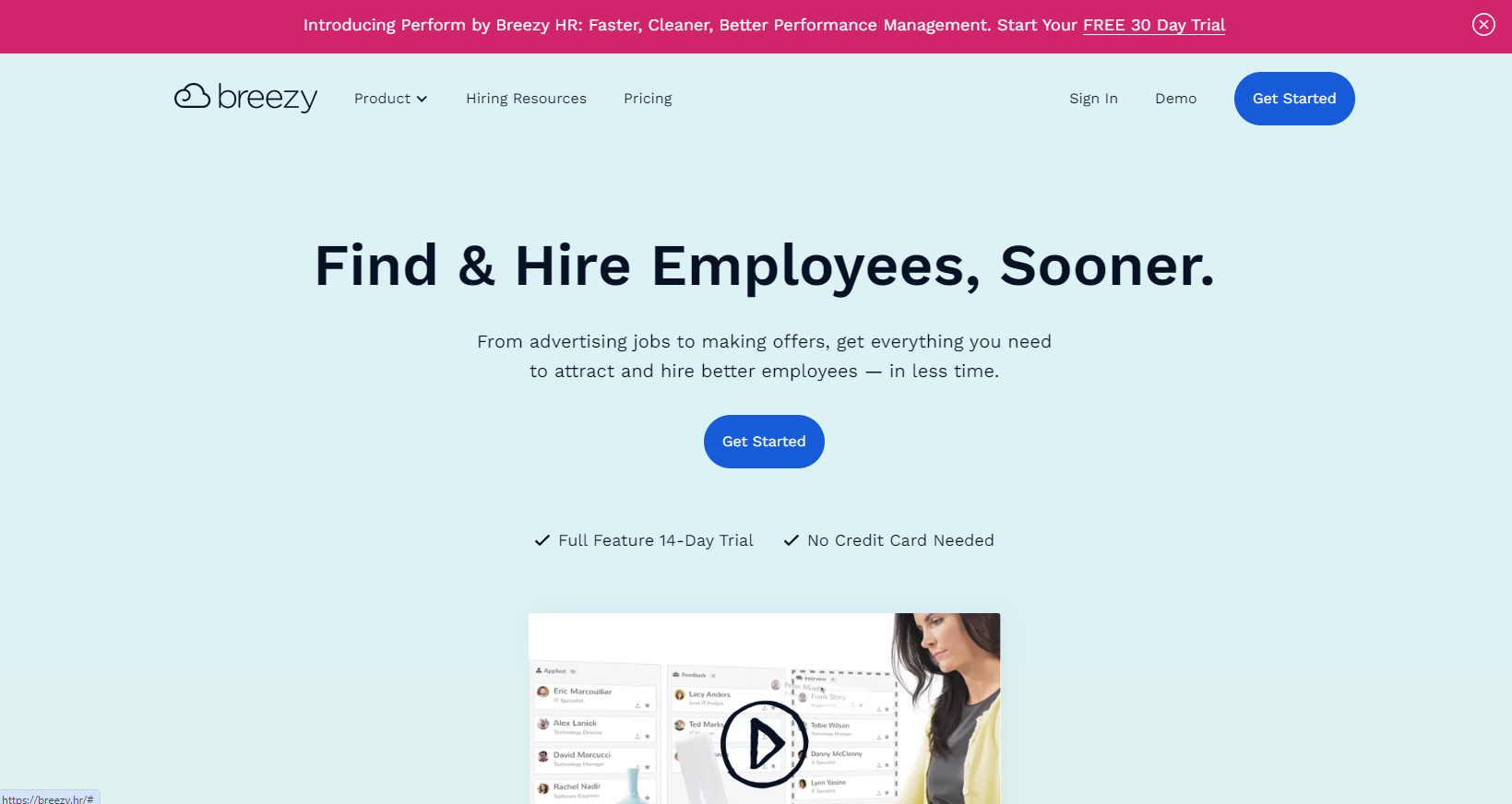
Breezy HR actually stands out from the crowd because it offers a wide range of onboarding capabilities. That includes automated emailing and text messaging, checklists, e-forms, and more.
Breezy HR Advantages 🟩
- Customizable workflows so all elements of the onboarding are completed with ease
Breezy HR Disadvantages 🟥
- Can be difficult to use the full potential of the software due to its complexity
17. Gusto

If your team has been struggling to successfully complete all steps of the onboarding process, Gusto may be a helpful HR tool. That's because it provides onboarding basics like paperwork, payroll setup, and directory integration.
Gusto Advantages 🟩
- Easy payroll integration
- Employee self-service options
Gusto Disadvantages 🟥
- Reporting tools are quite limited and lack customization options
18. Lever
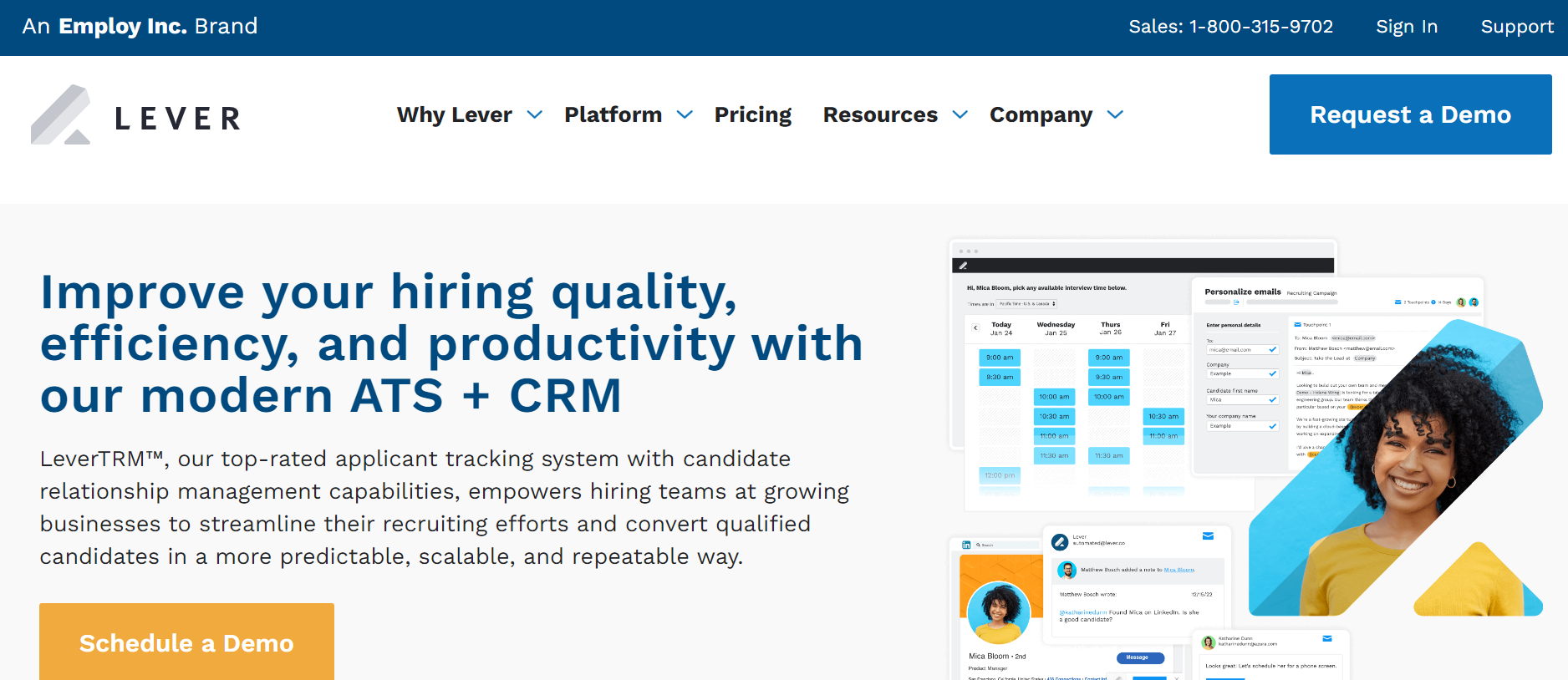
Lever focuses on applicant tracking, so much of the features have to do with candidate management and the hiring pipeline. However, there are a few things to help with onboarding, like customizable templates, task assignment, and e-forms.
Lever Advantages 🟩
- Many options to improve the candidate experience
- Automation possible
Lever Disadvantages 🟥
- Focus on hiring activities other than onboarding
19. Personio

This is a very comprehensive solution, with tools to support not only hiring and onboarding, but encourage employee engagement too. Some of the most important onboarding features include workflows, document signing, and an employee self-service portal.
Personio Advantages 🟩
- Smooth UX
Personio Disadvantages 🟥
- Template-driven approach lacks customization
20. Kin
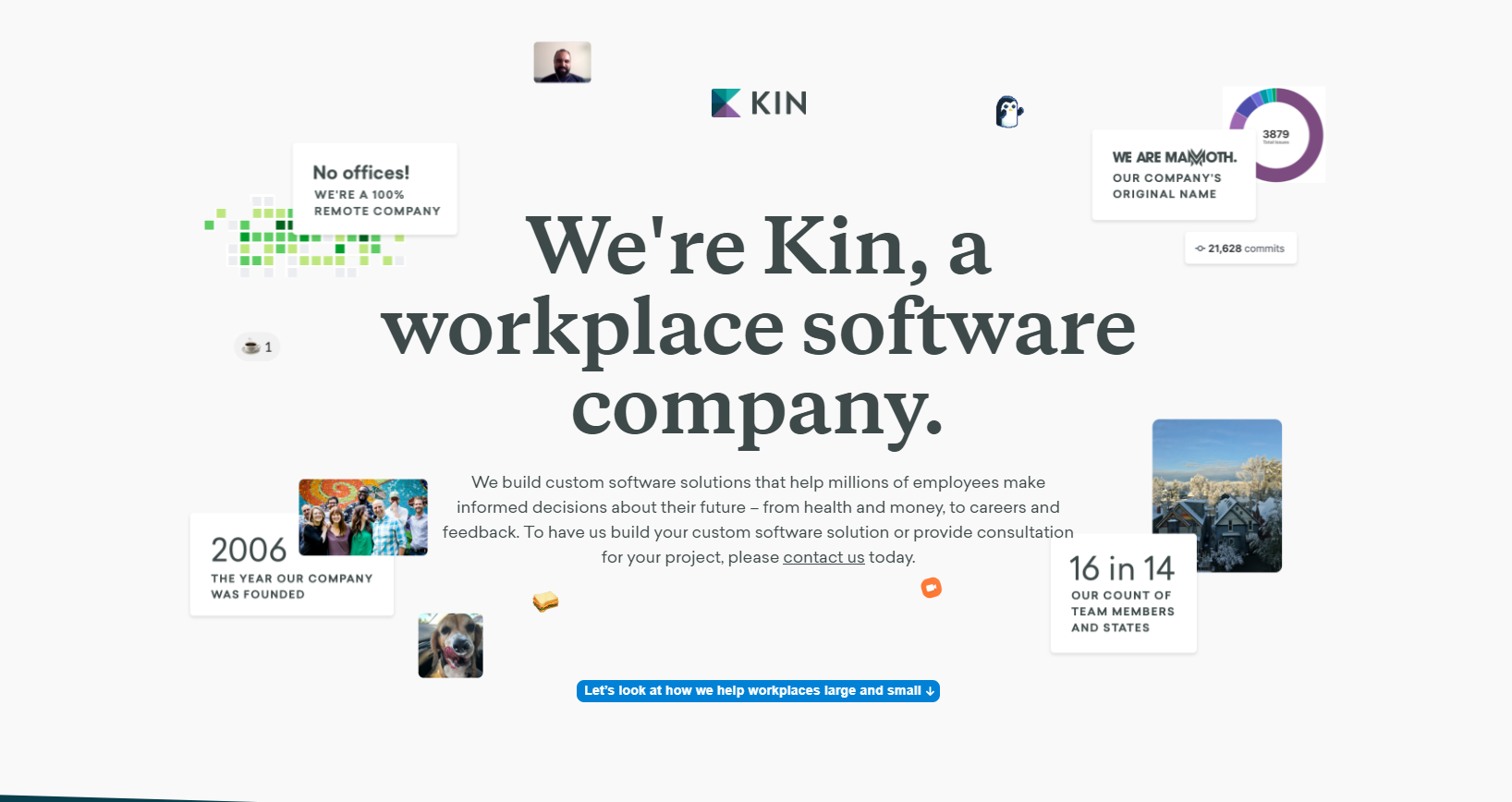
If you have a small or medium business and you need to centralize your HR tasks, Kin is a potential solution. The software mainly focuses on HR tasks like employee management and benefits. However, Kin also provides onboarding checklist creation, document collection, and texting capabilities.
Kin Advantages 🟩
- Intuitive and collaborative UX
Kin Disadvantages 🟥
- Light reporting and analysis features
Why Use Onboarding Software?
Onboarding software provides numerous benefits for staffing agencies over traditional manual onboarding processes.
Improves New Hire Experience ✅
Onboarding software creates a smooth, seamless experience for new hires. It guides them through all the required steps and information they need to get up to speed quickly. This leads to greater new hire satisfaction and engagement.
Saves Time Over Manual Onboarding ✅
Manual onboarding using paperwork is time-consuming and inefficient. Onboarding systems automate and streamline the process, saving HR and managers significant time. This allows them to focus on more strategic initiatives.
Ensures Consistency in Onboarding ✅
Software ensures every new hire goes through the same onboarding process and receives the same information. This reduces variability compared to manual approaches. Every new staff member gets a consistent foundation to start off their role.
Allows Customization for Different Roles ✅
While maintaining consistency, onboarding platforms allow HR to customize parts of the onboarding process for specific roles. This caters the experience and equips each new hire with information relevant for their position.
Tracks and Measures Onboarding Metrics ✅
Onboarding software provides visibility into key metrics like time-to-productivity and new hire retention. This data can highlight areas to improve the onboarding process over time. HR has concrete metrics for demonstrating the ROI of onboarding.
Most Important Features of Onboarding Software for Staffing Agencies
Onboarding software designed for staffing agencies should have features that support the unique needs of the industry. Here are some of the most important features to look for:
Pre-boarding Communication
Onboarding software should facilitate communication between the agency, client, and new hire before day one. This allows the new hire to get excited about the role, learn about the client, and take care of any pre-boarding tasks. Pre-boarding communication sets the hire up for success from the start.
On the other hand, if your software doesn't have communication tools, you can integrate it with a IP telephony software like Ringover. Once the two software are connected, your call logs will be updated automatically, and you'll also have access to tools like click-to-call and screen pop from directly within the SaaS HR software.
Digital Paperwork
Rather than printing out forms and manuals, onboarding software centralizes digital versions of all onboarding paperwork. This could include tax forms, NDAs, equipment requests, emergency contact info, and more. Digital paperwork is more efficient, organized, and environmentally friendly.
Company Resource Distribution
Onboarding software should provide access to company resources like employee handbooks, training materials, software tutorials, and contact lists. Having all this information in one place prevents new hires from getting overwhelmed.
Training and Development Planning
Structured training plans and clear development goals keep new hires engaged. Onboarding software can map out training schedules, document progress, and suggest development opportunities. This level of organization is especially helpful for staffing agencies managing many contractors.
Feedback Collection
Onboarding software should make it easy to collect feedback from new hires, managers, and clients. This feedback helps identify areas for onboarding program improvement. For staffing agencies, feedback also provides insights into the client onboarding experience.
Onboarding Challenges
Where onboarding often falls short:
- Inconsistent onboarding processes. Many staffing agencies still rely on paper forms and manual processes, leading to a disjointed experience for new hires. Important tasks fall through the cracks.
- Lack of engagement. Without an interactive, digital component, onboarding can feel monotonous for new employees. They don't get excited about the company or their role.
- Disconnected systems. HR, payroll, IT, and managers often use separate systems and spreadsheets to onboard. This leads to duplicative work and makes it hard to track progress.
- Weak compliance. When onboarding isn't centralized, it's easy for legal and compliance steps to be missed—putting the company at risk.
- Poor analytics. With manual processes, it's nearly impossible for staffing agencies to identify bottlenecks in onboarding or quantify results. There's no data to optimize.
Measuring Onboarding Success
It's crucial for staffing agencies to measure and track the effectiveness of their onboarding program. This allows them to identify areas for improvement and demonstrate the value of onboarding. Here are some key metrics to track:
- Satisfaction: Conducting surveys at 30/60/90 days can show new hire satisfaction with the onboarding experience. Look for trends in scores and feedback.
- Ramp Time: Track the time it takes for new hires to reach full productivity. Shorter ramp times indicate better onboarding. Compare across roles, departments, and locations.
- Retention: Analyze if retention rates improve after enhancing onboarding. Look at 30/60/90 day retention as well as first-year retention.
- Surveys and Pulse Checks: Periodic quick surveys on onboarding aspects like training, manager relationship, resources provided etc. can uncover pain points.
- Benchmarking Goals: Set onboarding KPIs like ramp time, satisfaction scores, retention etc. and benchmark against industry standards.
Analyzing these metrics can identify gaps in onboarding and demonstrate direct business impact. It transforms onboarding into a data-driven program that evolves based on what works. With clear onboarding success metrics, staffing agencies can onboard better and faster.
Onboarding Software for Staffing Agencies FAQ
How do you onboard a staffing agency?
Onboarding a staffing agency typically involves the following steps:
- Initial setup: Gathering necessary information from the agency, such as company details, client requirements, and employee details.
- User account creation: Creating user accounts for agency administrators, recruiters, and other relevant users.
- Configuration: Setting up the software to align with the agency's specific workflows, client needs, and compliance requirements.
- Training: Providing training and support to agency personnel on how to use the onboarding software effectively.
- Migration: If the agency is transitioning from another system, assisting in migrating existing data to the new software.
- Testing: Conducting testing and review to ensure the software is functioning correctly and meeting the agency's needs.
What is HR onboarding software?
HR onboarding software is a tool designed to streamline and automate the process of onboarding new employees. It helps HR departments manage tasks such as collecting and storing employee information, automating paperwork, facilitating compliance checks, coordinating training and orientation programs, and ensuring a smooth and efficient integration of new hires into the organization.
What is the new hire onboarding program?
The new hire onboarding program refers to the structured process that organizations follow to welcome and integrate new employees into the company. It typically includes activities such as orientation sessions, introductions to the team and company culture, training programs, completion of paperwork, and provision of necessary tools and resources.
The onboarding program aims to help new hires feel supported, understand their role and responsibilities, and quickly become productive and engaged members of the organization. Onboarding software can help automate and streamline this process, making it more efficient and effective.
ion. Don't underestimate its importance or do it manually when solutions exist.
- Tailor onboarding to your staffing agency's needs. Assess pain points, identify goals, and find a platform that addresses those specifics.
- Continuously improve the onboarding process with feedback surveys. Measure what works and what doesn't. Refine over time.
- Onboarding doesn't end after day one. Structure the first 90 days with check-ins and training to reinforce knowledge.
- Invest time upfront in onboarding to save countless hours down the road. The ROI and impact on the business makes it well worth the effort.
Onboarding sets the foundation for a new hire's entire tenure at your company. With the right onboarding software and strategic process in place, staffing agencies can start consultants off on the right foot and build effective, successful teams.
